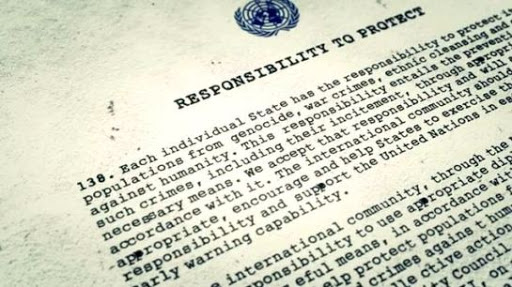Traumatized by the 6 million deaths of Jews in concentration camps during World War II, Europe came out after Nuremberg stating that another genocide never happened again. On December 9, 1948, the United Nations adopted the Convention on the Prevention and Punishment of the Genocide Crime and undertook to ensure another genocide would not replicate itself against any minority group anymore.
It seemed that the principle of “never again” existed until 25 years ago, on July 11, 1995, in Srebrenica – a town in eastern Bosnia, the Bosnian Serbian troops under the command of Radko Mladic infiltrated a UN safe area and they killed 8,000 Bosnian Muslim men and boys. The largest genocide in Europe after the Holocaust ended a three-year war of ethnic cleansing, summary executions and torture, rape camps and forced labor which all caused around 100,000 victims, 30,000 disappeared and over 2 million refugees. The Srebrenica massacre was one of the biggest failures of the international community under the eyes of the UN Blue Helmets. Despite the refusal of representatives in the Republic of Serbia and the government of the Republic of Srpska in Bosnia to admit the war crimes and apologize for them, in 2001, the International Criminal Tribunal for the former Yugoslavia (ICTY) judged that Srebrenica massacre 1995 was a genocide. The Srebrenica genocide occurred for the first time in Europe after the “never again” of the Holocaust but only a year after the genocide in Rwanda of the Hutu militias against moderate Tutsis and Hutus who caused 800,000 victims in just 100 days of ethnic cleansing.
Immediately the guilt feelings about Srebrenica in the collective conscience of western democracies, as happened after WWII, were translated into political actions. Behind the background of the massacre in Rwanda in 1994, the genocide of Bosnia and the ethnic cleansing in Kosovo in 1998 – the United Nations member states adopted a new, unique doctrine in 2005, that of responsibility to protect (R2P). The R2P principle was the first major organized attempt to draw global attention to humanitarian causes and crises. Its central idea is that “each individual State has a responsibility to protect its populations from genocide, war crimes, ethnic cleansing and crimes against humanity and that the international community has a responsibility to respond if a State manifests itself unable to protect their own populations from such crimes”. The United Nations Security Council is recognized as the body with primary responsibility for maintaining international peace and security.
But 25 years after Srebrenica we can only take note that the entire post-1945 structure in the defense of human rights is in crisis more than ever. 75 years after the adoption of the United Nations Charter and 15 years after the adoption of the R2P the number of internally displaced people due to persecution and war has increased more than ever. Despite the never-again refrain, the world has failed to prevent atrocities against civilians in many countries. In Myanmar in 2016 and 2017, over 10,000 Rohingya civilians were assassinated by Buddhist majority military forces. More than 740,000 were driven out of their homes and into neighboring Bangladesh. Thousands of people have been tortured and raped. The United Nations has called it a manual’s example of ethnic cleansing and genocide. In Syria, where the greatest humanitarian catastrophe has occurred to date, Bashar al Assad used chemical weapons against his own people in the civil war that has lasted since 2011 and has caused over 400,000 victims and more than 11 million refugees to date, 80% of the war-torn population of Yemen cannot survive without humanitarian assistance, more than one million Uyghurs, Kazakhs and other mostly Muslim minorities undergo forced labor and “re-education” in the fields of western China. The extent of the failure in all of this is enormous and the perception is that R2P, the United Nations with its own Council (where the veto of China and Russia has often weighed on many of the decisions) and all the institutions supposed to protect human rights are in deep crisis and no longer work. And in this month of the anniversary of Srebrenica the question is: what happened to the “never again” and R2P?
Certainly R2P comes into conflict with the principle of sovereignty of States, one of the cornerstones of international law, but underlines the relationship between rights and responsibilities that is included in the principle of sovereignty of a State. The United Nations Charter “guarantees non-interference by prohibiting intervention in the internal affairs of the Member States, but can be revoked if States fail to protect their citizens from repression and internal armed conflict. In this case, non-intervention yields to international responsibility to protect”, which means that the international community can intervene to protect humans from mass atrocities.
Reactions to R2P have been different. R2P is not proper part of International Law. And while the intervention in Kosovo could be called a successful intervention, the intervention in Libya is doubtful that it was. Humanitarian intervention may seem like a contradiction in terms. Many are those who see it as a “cover” for imperialism or preventive war. And given that R2P is not a structured norm and relies heavily on discretion and arbitrariness, humanitarian intervention becomes vulnerable in search of full legitimacy. The difficulty in demonstrating their effectiveness, the problem of their human and financial costs, or even of strategic benefits makes R2P seem very unstable or sometimes even inconsistent.
But what could be the solution in the face of disasters like those in Syria? I can’t avoid remembering Kosovo and the prayers of the people of an intervention by NATO during the campaign of ethnic cleansing and persecution by the Serbs, just as I cannot forget in all these years the sense of helplessness of all Syrians waiting for an intervention to defend civilians that would never have happened. There was an intervention, but by the Russian air force in defense of Bashar al Assad. The solution cannot be indifference, cynicism and withdrawal from international institutions, even if the constant deficiencies appeals to the need to reform these institutions. As on many issues, also in the face of humanitarian intervention, emerges the whole crisis of the political leadership of the western countries, the same that in all these years have done nothing but repeat the refrain of “never again”. Leadership unable to act together as it was almost always the case with Europe in the face of humanitarian crises. Leadership capable of making decisions only at the last minute when the pressure cooker of an emergency has already broken out (for example, Clinton’s decision in Kosovo came after Rwanda and Srebrenica and Obama’s in Syria never came). The solution cannot be the abandonment of R2P, nor the indifference in defending populations in the face of genocide, ethnic cleansing and crimes against humanity. A look back requires strong US leadership, the composure of the leaderships of all the countries that in 1948 adopted the Convention on the prevention and punishment of the crime of genocide, their commitment within the United Nations, NATO and all other multilateral organizations; and the development of sustainable strategies both before these atrocities reach their peak, and after any intervention in organizing the “life after”. Reform of international institutions, strong leadership and forward-looking strategies before and after humanitarian interventions could be the real ingredients of R2P where the refrain of “never again” could become credible.
Author
-

Researcher on International Relations Middle East and Balkans
View all posts
CSSII- Centro Interdipartimentale di Studi Strategici, Internazionali e Imprenditoriali,
Università di Firenze, Italy, Albania




